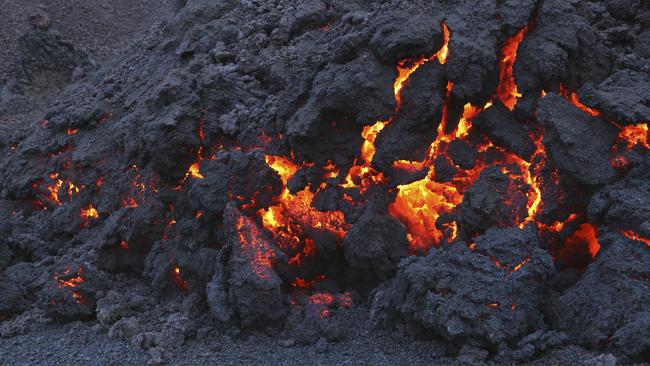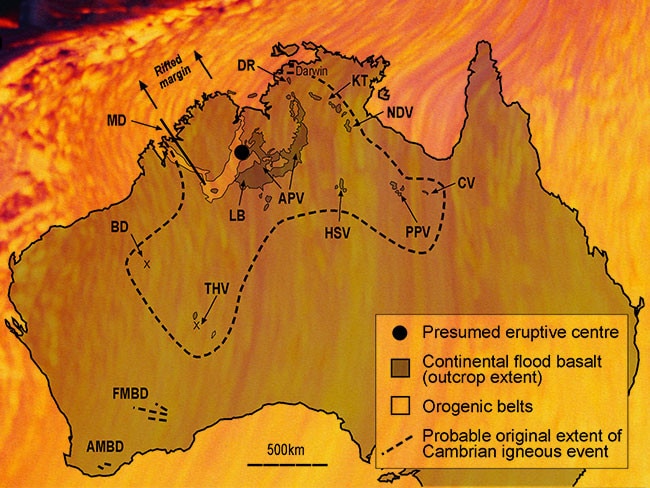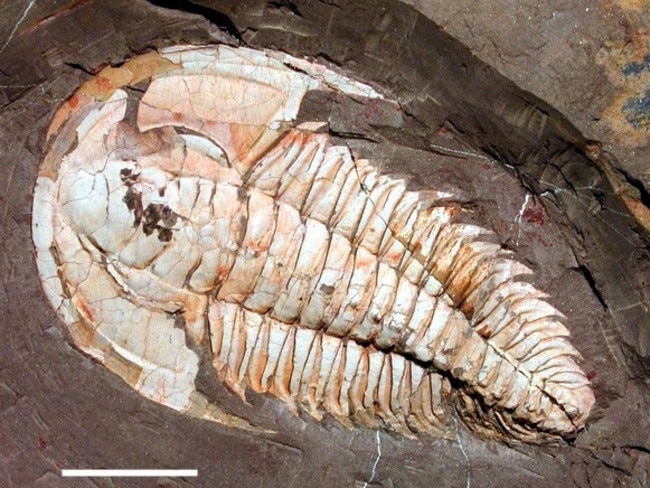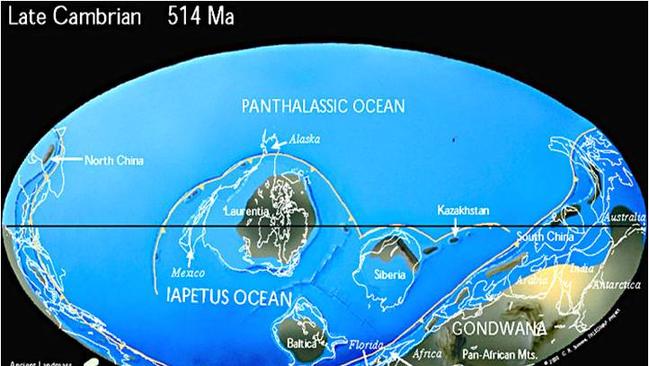Volcanic lava flows in Australia fingered as cause for massive ancient Cambrian extinction
THE forensic quest to find the culprit in Earth’s first great mass-extinction has a new suspect: Australia.

THE forensic quest to find the culprit in Earth’s first great mass-extinction has a new suspect: Australia.
The journal Geology argues the case that the first known great mass die-off, 511 million years ago, was triggered by enormous volcanic eruptions in Australia.
The consequences were cataclysmic: The first examples of multicellular life were decimated worldwide, with the survivors huddling together in widely separated communities.
That some 50 per cent of all known species died off at this time is not in doubt. That it had something to do with falls in oxygen in the ocean and wildly changed weather has been established.
But what exactly brought this about has been the subject of much debate and research.
Now there’s a new theory in town.
Curtin University’s associate professor Fred Jourdan has taken samples of the crumbled remains of vast volcanic lava flows smothering a 2 million square kilometre area of Northern and Western Australia.

High precision equipment was brought to bear, using techniques which track the ageing of uranium into lead along with another method of determining the decay of the element argon.
The result placed the eruption squarely on top of the Early-Middle Cambrian extinction.
The ancient lava field, known as the Kalkarinjdi volcanic province, also produced evidence of massive sulphur dioxide outflows — indicating the noxious gas was released into the atmosphere.
Jourdan’s team from Curtin University’s Department of Applied Geology used the recent (geologically speaking) explosion of Mount Pinatubo in 1991 as a template for the impact of such gasses. Pinatubo, a much, much smaller volcano than that at Kalkarinjdi, nevertheless released enough sulphur dioxide into the atmosphere to have a measurable impact on the world’s weather for several years.

“If relatively small eruptions like Pinatubo can affect the climate just imagine what a volcanic province with an area equivalent to the size of the state of Western Australia can do,” he wrote.
But the effect was not restricted to the volcano itself, his research concludes.
The enormous flows of lava would have encountered deposits of oil and sulfate. Whenever one of these deposits was triggered by a lava flow, a new — and enormous — outflow of methane gas, carbon dioxide or sulphur dioxide would spill into the atmosphere.
This would have created a climate roller-coaster effect that would have made it difficult for any life to cope with, he said.
“To comprehend the long-term climatic and biological effects of the massive injections of gas in the atmosphere by modern society, we need to recognise how climate, oceans and ecosystems were affected in the past,” he said.




